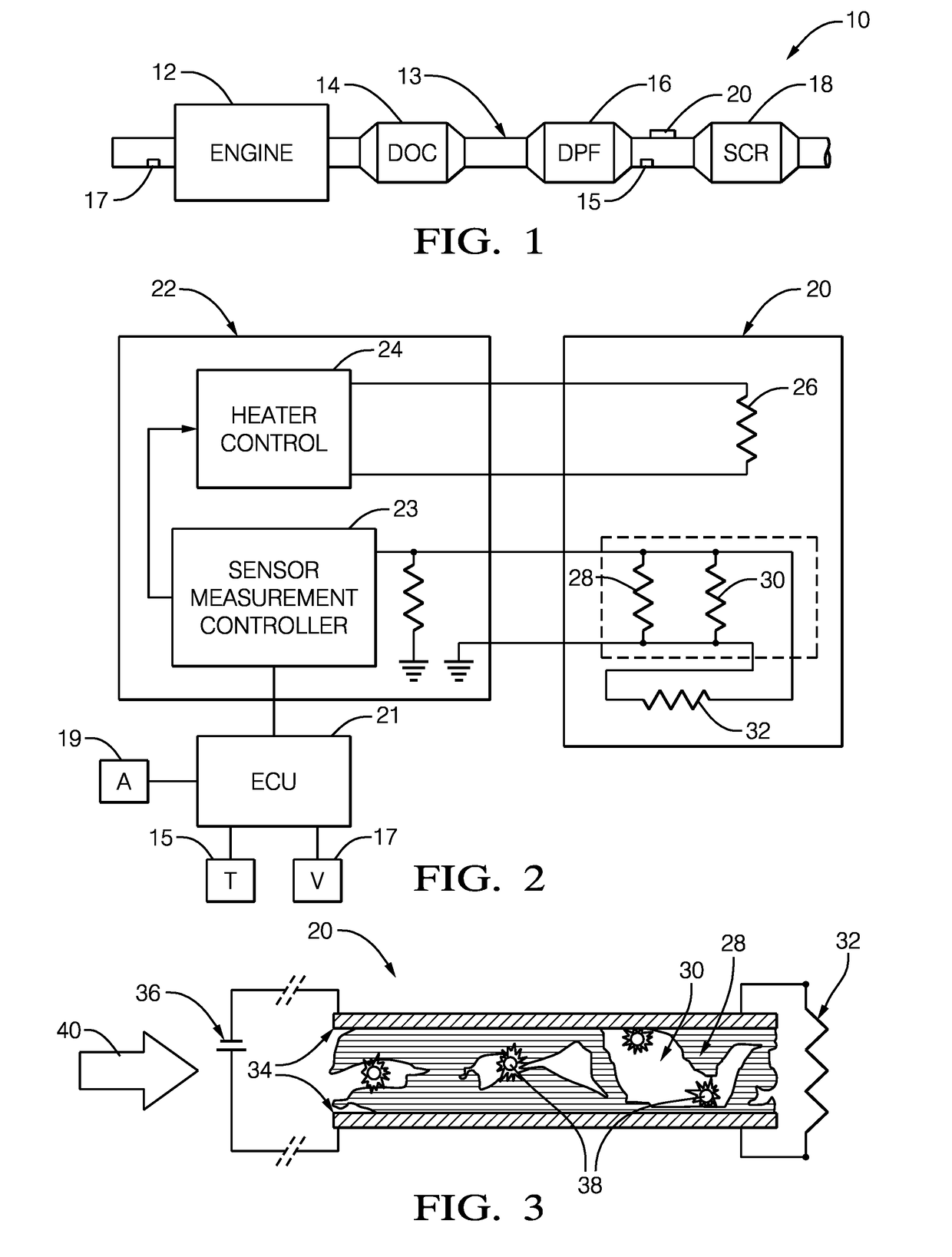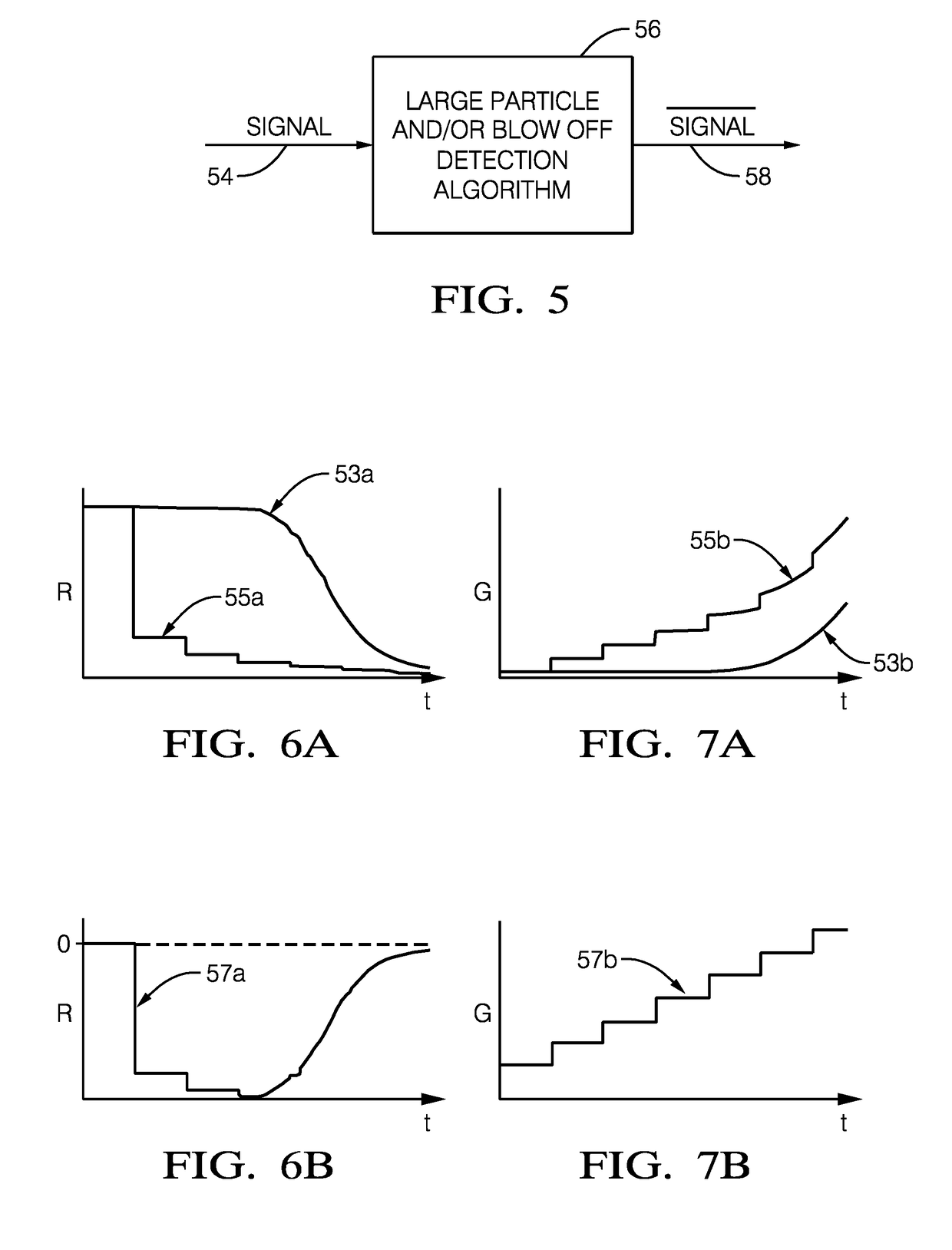Particulate matter detection system and method
a technology of particle matter and detection system, which is applied in the direction of exhaust treatment, instruments, material resistance, etc., can solve the problems of inability to accurately detect the particle size of the PM sensor, the mechanics of the accumulation of soot particles on the pm sensor may be much more complicated, and the emission of mainly limited particles, so as to maintain the service life and reduce thermal stress. , the effect of increasing the reliability of the outpu
- Summary
- Abstract
- Description
- Claims
- Application Information
AI Technical Summary
Benefits of technology
Problems solved by technology
Method used
Image
Examples
Embodiment Construction
[0034]An example vehicle powertrain system 10 is shown in FIG. 1. The system 10 includes an engine 12, which in this non-limiting exemplary embodiment is a diesel engine, fluidly connected to an exhaust system 13 that includes a diesel oxidation catalyst (DOC) 14 and a diesel particulate filter (DPF) 16. A selective catalyst reduction (SCR) catalyst, such as those used in conjunction with a urea injection system, is arranged downstream from the DPF 16.
[0035]A particulate matter (PM, also referred to as “soot”) sensor 20 is arranged in the exhaust system 13, typically in proximity to the DPF 16, although it should be understood that the PM sensor 20 may be located elsewhere. The PM sensor 20 is configured to be exposed to the exhaust stream and accumulate PM on its internal sensing element. The PM sensor 20 provides a resistance signal that varies based upon an amount of the PM on the sensor.
[0036]An exhaust gas temperature sensor 15 is arranged in the exhaust stream in proximity to ...
PUM
| Property | Measurement | Unit |
|---|---|---|
| temperature | aaaaa | aaaaa |
| bias voltage Vb1 | aaaaa | aaaaa |
| sensor resistance | aaaaa | aaaaa |
Abstract
Description
Claims
Application Information
 Login to View More
Login to View More - R&D
- Intellectual Property
- Life Sciences
- Materials
- Tech Scout
- Unparalleled Data Quality
- Higher Quality Content
- 60% Fewer Hallucinations
Browse by: Latest US Patents, China's latest patents, Technical Efficacy Thesaurus, Application Domain, Technology Topic, Popular Technical Reports.
© 2025 PatSnap. All rights reserved.Legal|Privacy policy|Modern Slavery Act Transparency Statement|Sitemap|About US| Contact US: help@patsnap.com



